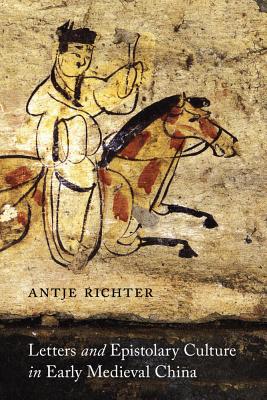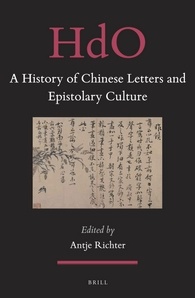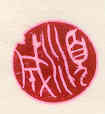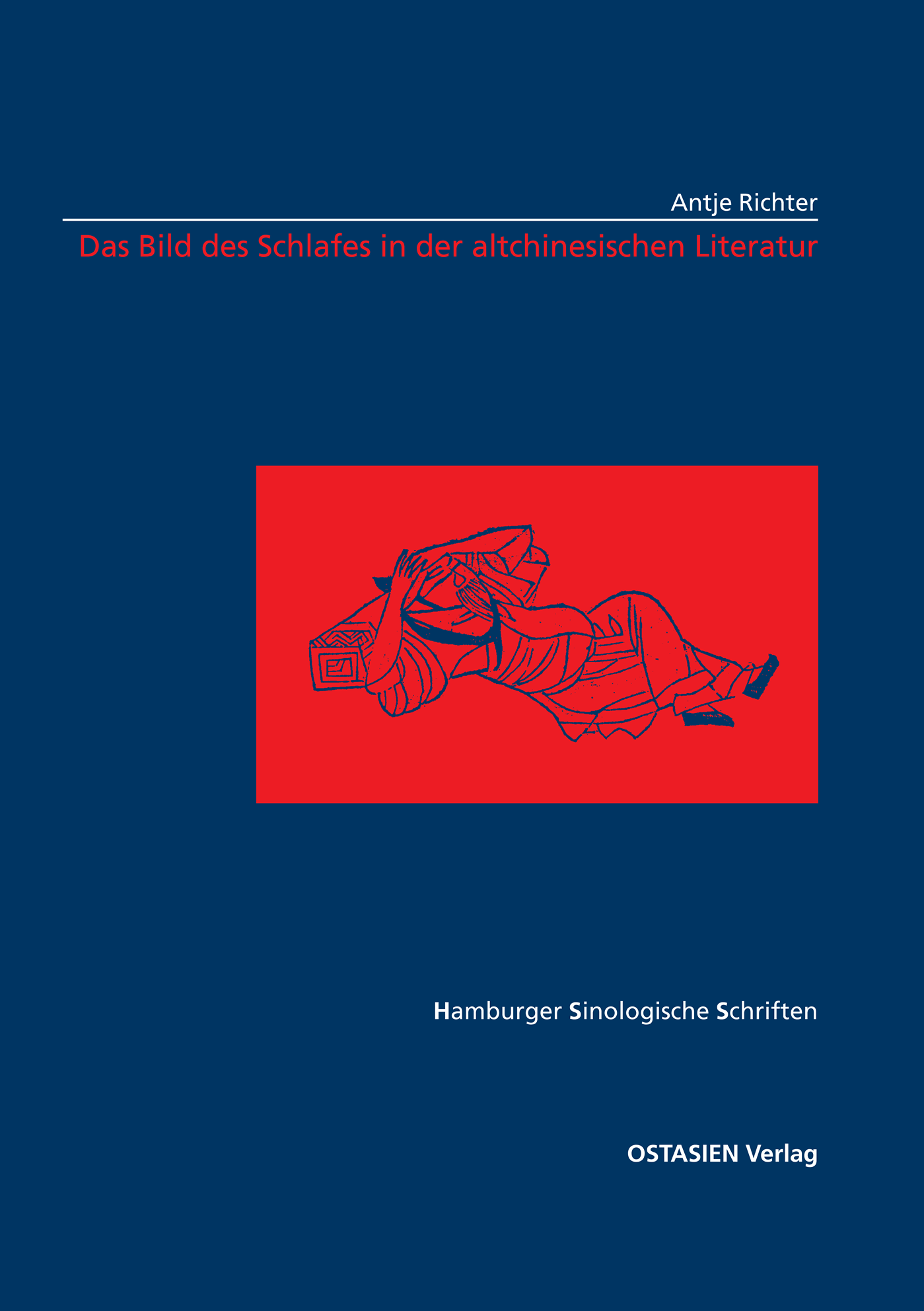 |
In 2013, Letters & Epistolary Culture in Early Medieval China was published by University of Washington Press. It provides an introduction to personal letters and letter-writing in China between the 3rd and 6th century CE, along with translations and interpretations of letters written at the time. I explore the material culture of personal letter writing (writing supports and utensils, envelopes and seals, the transportation of letters), how the peculiar features of the epistolary genre were reflected in early Chinese literary thought, and the relationship between literary individuality and the letter-writing conventions of the time as we know them from transmitted literature and letter-writing guides. I also consider epistolary structures and phrases as well as conventional topoi of letter writing, such as lamenting the separation between the correspondents, letters as substitutes for face-to-face communication, and comments on the limits of writing and language. The book provides a wealth of examples to illustrate the components of the standard personal letter.
For a table of contents and the introduction click here.
To order from University of Washington Press click here.
|
 |
The edited volume History of Chinese Letters and Epistolary Culture, published with Brill in Leiden in 2015 (Handbuch der Orientalistik, vol. 4:31), collects papers given at a workshop in Boulder in August 2012, along with contributions by several other scholars. It is the first publication, in any language, that is dedicated to the study of Chinese epistolary literature and culture in its entirety, from the early empire to the twentieth century. The twenty-five essays collected in this book demonstrate the significance of written communication in China as well as that of research in this field. They show letters to be all-important elements in the negotiation of societal as well as individual values and relationships in all kinds of situations and throughout Chinese history since at least the Han dynasty; they examine the literary and visual means by which letter writers attempted to do justice to this important role; they propose ways of understanding historical letters that largely came down to us not as original manuscripts but in edited form; they cast light on questions of authorial authenticity in the context of a genre regulated by normative discourses and employed for varying, often unknown agendas--to mention only the most crucial concerns. |
Not the least, they introduce dozens of letters, often the first translation into English, and thus make epistolary history palpable in all its vitality and diversity: Letters written by men and women from all walks of life to friends and lovers, princes and kings, scholars and monks, seniors and juniors, family members and neighbors, potential patrons, newspaper editors, and many more. Among them are very personal documents that were never meant to be read by anyone but the addressee, but also explicitly open letters and circulars as well as letters that seem to hover between these poles. There are literary and non-literary letters; letters that came down to us as manuscripts written by obscure authors and letters transmitted from the greatest writers of their times; casual personal letters and letters polished to achieve maximum public effectiveness. In order to draw attention to the broad spectrum of linguistic conventions of letter writing and to familiarize readers with this language that is often regarded as difficult to access, all epistolary texts translated here are also provided in the original Chinese. Another strength of this volume is that its essays take very different approaches. This is not only due to the breadth of epistolary material they introduce, but also reflects the potential of epistolary material, which allows and calls for very different modes of scholarly inquiry.
My articles on various aspects of letter writing include:
"Literary Criticism in the Epistolary Mode: The Cao Brothers, Hofmannsthal, Keats, and Kolmar." Journal of Epistolary Studies 1 (2019): 5–37. (PDF)
with Charles Chace (1958–2018), "The Trouble with Wang Xizhi: Illness and Healing in a Fourth-Century Chinese Correspondence." T'oung Pao 103 (2017): 33–93.
"Three Years and Not a Word Has Faded: Reading Letters in Early Medieval Chinese Poetry." In China Across the Centuries: Papers from a Lecture Series in Budapest. Ed. Gábor Kósa. Budapest Monographs in East Asian Studies. Budapest: Department of East Asian Studies, Eötvös Loránd University, 2017. 61–88. (PDF)
"Beyond Calligraphy: Reading Wang Xizhi's Letters." T'oung Pao 96 (2011): 370–407.
"Notions of Epistolarity in Liu Xie's Wenxin diaolong." Journal of the American Oriental Society 127 (2007): 143–60.
"Letters and Letter Writing in Early Medieval China." Early Medieval China 12 (2006): 1–29.
A related ongoing project is an online Table of Non-Official Letters from Early Medieval China that collects scholarship on and translations of individual early medieval letters.
"Empty Dreams and Other Omissions: Liu Xie's Wenxin diaolong Preface." Asia Major 25.1 (2012): 83–110. (PDF)
"Wenxin diaolong." In: Early Medieval Chinese Texts: A Bibliographic Guide. (China Research Monograph.) Ed. Cynthia L. Chennault; Keith N. Knapp; Alan J. Berkowitz; and Albert E. Dien. Berkeley: Institute of East Asian Studies, University of California, 2015. pp. 389–400. (PDF)
(forthcoming) "Four Gates, Eight Poets, Sixteen Poems: Dependent Co-Authoring in Early Medieval Chinese Poetry." In Authors, Authorship, and Authoring in Late Classical and Medieval China. Edited by Wendy Swartz and Robert F. Campany. Leiden: Brill, 2025.
(forthcoming) "Notions of Sincerity & Authenticity in Liu Xie's Wenxin diaolong."
(forthcoming) "Debating Silences in the Vimalakīrti-nirdeśa sūtra."

"Stories of Coping with Sickness in Early Medieval China: Illness Narratives in Anecdotal Literature." Chinese Medicine and Culture 6.2 (2023): 175–82.
"Mistaken Identities: Negotiating Passing and Replacement in Chinese Records of the Strange." Early Medieval China 29 (2023): 3–23.
(forthcoming) "In the Fox’s Own Words: Talking about Oneself in Medieval Chinese Narrative Literature." a/b: Auto/Biography Studies (2025).

 |
Confucius condemns one of his disciples for having a lie-down in the daytime. Why, then, does the Master himself take a mid-day nap? Another ancient Chinese philosopher is delighted when one of his pupils falls asleep in the middle of a lesson. About a king we read that he nodded off while checking account books, so giving his subjects opportunity to falsify the books. This study introduces and analyses the main notions of sleep in received and tomb texts of Early China (c. 500 BCE – 200 CE). Starting from lexical investigations I inquire into the perception of sleep as a natural, social and psychological phenomenon, giving special consideration to the rhetorical functions of sleep in a given context. The different conceptions of sleep that are identified highlight, in surprising lucidity, principal features of the different so-called "schools of thought" of Early China. Starting from narratives about sleep, the main rhetorical aims of a text may be deduced. Moreover, the fresh perspective on ancient Chinese literature discovers motives and intertextual relations that are also relevant beyond the question of sleep. |
I have also written articles about sleep in ancient China:
"Sleeping Time in Early Chinese Literature." In: Night-Time and Sleep in Asia and the West: Exploring the Dark Side of Life. Ed. Brigitte Steger; Lodewijk Brunt. Richmond: RoutledgeCurzon, 2003. 24–44. (Reprinted 2006 in the series Beiträge zur Japanologie, vol. 38, Wien: Abteilung für Japanologie des Instituts für Ostasienwissenschaften, Universität Wien). (PDF)
"Der Schlaf in der medizinischen Literatur des Alten China [Sleep in Early Chinese Medical Literature]." Chinesische Medizin 17.4 (2002): 24–44.
| My 2004, I published an article in German, whose title translates as "Coming Home with Riches: The Wheelbarrow as an Auspicious Motif in Popular Chinese Prints." The article briefly outlines the technological evolution of the Chinese wheelbarrow and analyses modes of its representation with a focus on the wheelbarrow as a motif in prints since Late Imperial China: "Mit Schätzen beladen heimkehren: Der Schubkarren als glückverheißendes Motiv in volkstümlichen chinesischen Drucken" Monumenta Serica 52 (2004): 277–324. For an introduction in English and illustrations click here. |  |